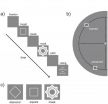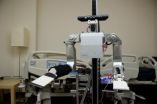(Press-News.org) A history of alcohol abuse significantly impacts quality of life for patients after liver transplant, according to researchers at Henry Ford Hospital.
"Transplant recipients with alcoholic cirrhosis experienced less improvement in physical quality of life and reported greater pain and physical limitations than non-alcoholics after transplant surgery," says Anne Eshelman, Ph.D., Henry Ford Behavioral Health Services, lead author of the study.
"Understanding alcoholic and nonalcoholic patients' post-transplant change in quality of life may assist in treatment planning. Our results suggest that better interventions to improve pain tolerance, mobilize support, and help patients rebuild their lives after transplantation may improve quality of life in this high-risk population."
Study results were published in the most recent issue of Transplant Proceedings.
A sample of 65 end-stage liver disease patients were surveyed before and after liver transplantation for physical and mental health quality of life using the SF-36 Physical Health Summary and Mental Health Summary. Baseline data was collected prior to transplant and follow-up data was collected at one and six months after transplantation.
Results indicate physical quality of life did not improve significantly between one- and six-month follow-up for patients with alcohol abuse history.
By contrast, mental health quality improved significantly between baseline and one-month follow-up, but not between one- and six-month follow-up. No significant differences were found on the Mental Health Summary index based on alcohol abuse history for either time period.
"For liver transplant patients, improvements in psychosocial functioning and quality of life precede improvements in physical quality of life. We found that weakened physical quality of life improvements for patients with alcohol abuse histories are related to greater pain and physical deficits," explains Dr. Eshelman.
"Some alcoholics may have lower pain thresholds and may have used substances for self-medication for both physical and emotional pain, and post-transplant, they may have less effective coping strategies to manage pain."
According to the Organ Procurement and Transplantation Network, more than 6,000 people undergo transplant surgery each year and there are nearly 17,000 people currently waiting for liver transplant.
###
The study was funded by Henry Ford Hospital.
Alcohol abuse history influences quality of life following liver transplant
2011-03-10
ELSE PRESS RELEASES FROM THIS DATE:
EU tariffs obstacle to trade with the rest of the world
2011-03-10
Increased imports often mean cheaper products for EU consumers and greater opportunities for producers in other countries to export their products, but also increased competition for EU producers.
"I have compared various product groups and found that the effects of a reduction in tariffs would be different for fruit and vegetables and for cereals", says Cecilia Hammarlund, who is behind the report Handel med hinder – effekter av tullar på EU:s jordbruksimport (Trade with obstacles – effects of tariffs on EU agricultural imports).
The study shows that an average reduction ...
Redefining normal blood pressure
2011-03-10
As many as 100 million Americans may currently be misclassified as having abnormal blood pressure, according to Dr. Brent Taylor from the Veterans Affairs Health Care System in Minneapolis and the University of Minnesota and his colleagues. Their findings1 show that these people are not actually more likely to die prematurely than those with 'normal' blood pressure, i.e. below 120/80. Taylor and colleagues' article in the Journal of General Internal Medicine², published by Springer, also shows that in those under 50, diastolic blood pressure* is the more important predictor ...
Learning to see consciously
2011-03-10
Our brains process many more stimuli than we become aware of. Often images enter our brain without being noticed: visual information is being processed, but does not reach consciousness, that is, we do not have an impression of it. Then, what is the difference between conscious and unconscious perception, and can both forms of perception be changed through practice? These questions are important not only for basic research, but also for the treatment of patients with perceptual deficits due to brain lesions e.g. following a stroke. Scientists at the MPI for Brain Research ...
How do people respond to being touched by a robot?
2011-03-10
For people, being touched can initiate many different reactions from comfort to discomfort, from intimacy to aggression. But how might people react if they were touched by a robot? Would they recoil, or would they take it in stride? In an initial study, researchers at the Georgia Institute of Technology found people generally had a positive response toward being touched by a robotic nurse, but that their perception of the robot's intent made a significant difference. The research is being presented today at the Human-Robot Interaction conference in Lausanne, Switzerland.
"What ...
Toward real time observation of electron dynamics in atoms and molecules
2011-03-10
Quebec City, March 9, 2011 – Another step has been taken in matter imaging. By using very short flashes of light produced by a technology developed at the national infrastructure Advanced Laser Light Source (ALLS) located at INRS University, researchers have obtained groundbreaking information on the electronic structure of atoms and molecules by observing for the first time ever electronic correlations using the method of high harmonic generation (HHG). Made by a team of researchers from the Energy, Materials, and Telecommunications Center of INRS and the National Research ...
Combating cucurbit yellow stunting disorder virus
2011-03-10
This release is available in Spanish.
U.S. Department of Agriculture (USDA) scientists are working to give melon growers some relief from cucurbit yellow stunting disorder virus, or CYSDV.
In 2006, Agricultural Research Service (ARS) plant pathologist Bill Wintermantel with the U.S. Agricultural Research Station in Salinas, Calif., and university colleagues identified the plant disease that growers in California's Imperial Valley and nearby Yuma, Ariz., noticed was spreading through their cucurbit fields. Cucurbit crops affected included cantaloupe and honeydew melons.
ARS ...
Synthetic biology: TUM researchers develop novel kind of fluorescent protein
2011-03-10
This release is available in German.
Proteins are the most important functional biomolecules in nature with numerous applications in life science research, biotechnology and medicine. So how can they be modified in the most effective way to attain certain desired properties? In the past, the modifications were usually carried out either chemically or via genetic engineering. The team of Professor Arne Skerra from the TUM Chair of Biological Chemistry has now developed a more elegant combined solution: By extending the otherwise universal genetic code, the scientists are ...
Banana peels get a second life as water purifier
2011-03-10
To the surprisingly inventive uses for banana peels — which include polishing silverware, leather shoes, and the leaves of house plants — scientists have added purification of drinking water contaminated with potentially toxic metals. Their report, which concludes that minced banana peel performs better than an array of other purification materials, appears in ACS's journal Industrial & Engineering Chemistry Research.
Gustavo Castro and colleagues note that mining processes, runoff from farms, and industrial wastes can all put heavy metals, such as lead and copper, into ...
An advance toward blood transfusions that require no typing
2011-03-10
Scientists are reporting an "important step" toward development of a universal blood product that would eliminate the need to "type" blood to match donor and recipient before transfusions. A report on the "immunocamouflage" technique, which hides blood cells from antibodies that could trigger a potentially fatal immune reaction that occurs when blood types do not match, appears in the ACS journal, Biomacromolecules.
Maryam Tabrizian and colleagues note that blood transfusions require a correct match between a donor and the recipient's blood. This can be a tricky proposition ...
New study shows government spending preferences of Americans
2011-03-10
In its 27th survey of American spending priorities since 1973 conducted as part of its General Social Survey (GSS), NORC at the University of Chicago Wednesday released a report on its most recent findings. By a notable margin, education and health care were the top two spending priorities of Americans. And Americans are consistent in that: those two categories have finished in the top two in each of the ten surveys since 1990.
The spending priorities report is derived from recently released data of the 2010 General Social Survey which NORC has conducted for forty years. ...

